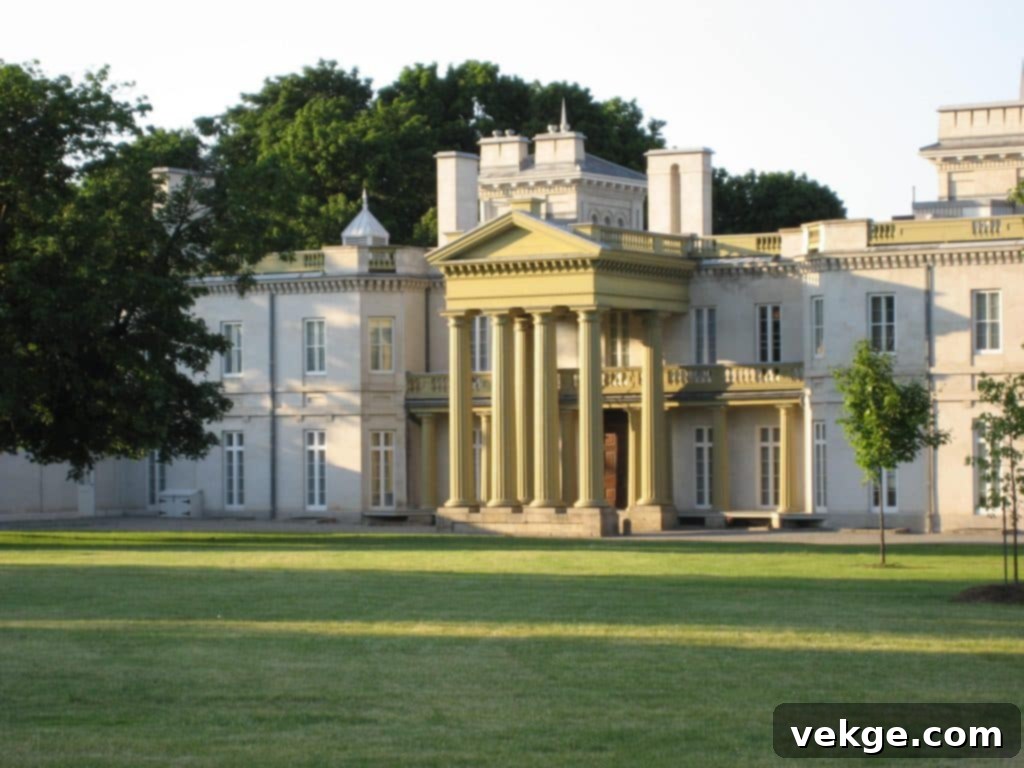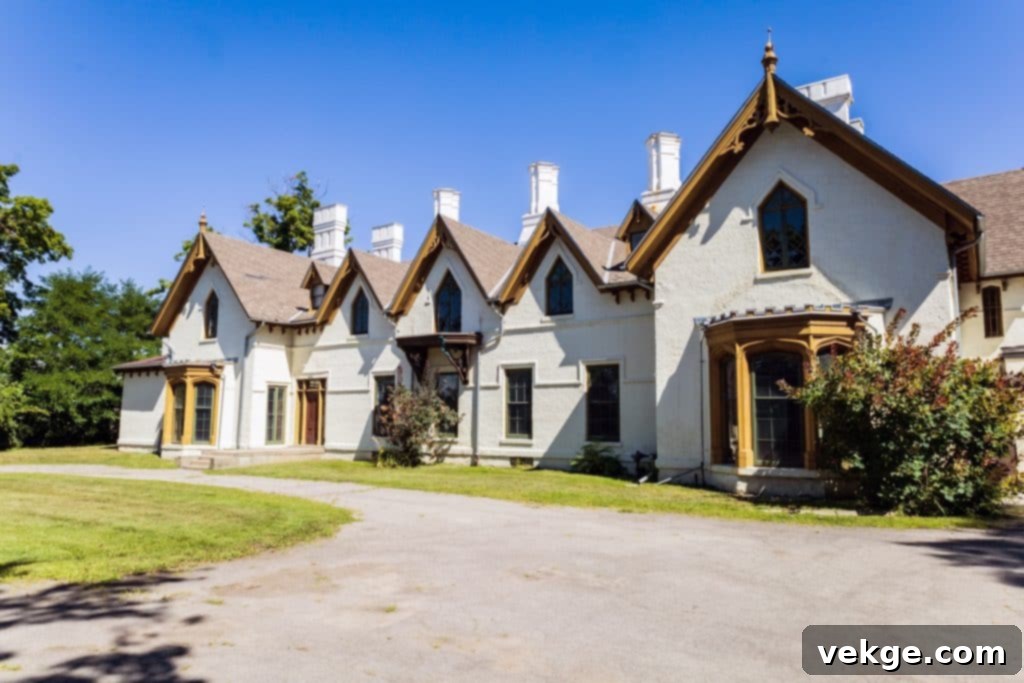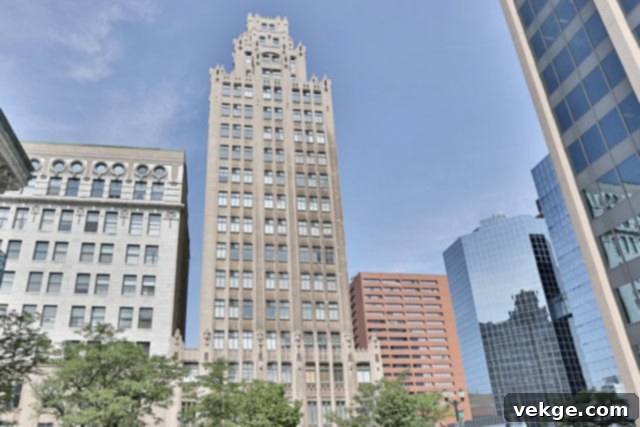Discover Hamilton’s Architectural Marvels: A Journey Through Historic Landmarks and Modern Icons
Hamilton, Ontario, stands as a city steeped in history, its diverse architectural landscape offering a compelling narrative of its profound past. From the majestic grandeur of Victorian-era mansions to the sleek lines of modern designs, the buildings of Hamilton are more than just structures; they are tangible reflections of the city’s evolution over centuries, solidifying its status as one of Canada’s most historically significant and economically vital urban centers. This unique blend of old and new makes Hamilton a captivating destination for anyone interested in the stories buildings tell.
Embark with us on an immersive virtual tour as we delve into some of the most iconic and landmark buildings that collectively define Hamilton’s rich and varied architectural heritage. Each structure tells a piece of the city’s story, showcasing the artistic, political, and industrial forces that have shaped this vibrant community.
Dundurn Castle: A Neoclassical Masterpiece and National Historic Site

Our architectural journey commences with Dundurn Castle, an undisputed National Historic Site and arguably one of Hamilton’s most iconic and recognizable landmarks. Constructed in the 1830s, this magnificent neoclassical mansion served as the lavish residence of Sir Allan Napier MacNab, a hugely influential political figure who once held the office of Premier of the Province of Canada.
Dundurn Castle epitomizes the grandeur of early Canadian aristocracy. Its neoclassical design, characterized by symmetry, imposing columns, and classical motifs, reflects the prevailing architectural trends of the era, inspired by ancient Greek and Roman structures. The building’s imposing presence and elegant proportions made it a symbol of power and prestige during its time. Today, visitors are invited to step back in time, exploring the opulent interiors meticulously restored to their 1850s splendor. Wander through the beautifully landscaped grounds, which include an authentic 19th-century kitchen garden, and immerse yourself in the fascinating history of the MacNab family and the servants who maintained this grand estate. Dundurn Castle not only preserves a significant piece of Hamilton’s past but also offers a vibrant educational experience.
Auchmar Estate: A Glimpse into Georgian Elegance and Enduring Legacy

Our next stop transports us to the exquisite Auchmar Estate, another distinguished historic mansion that provides an intimate glimpse into Hamilton’s formative years. Erected in the early 19th century, this prime example of Georgian-style architecture is renowned for its understated elegance and the serene, picturesque surroundings that embrace it.
The Georgian style, popular during the reign of the British Hanoverian kings, is characterized by its balanced symmetry, classical detailing, and a sense of refined order. Auchmar embodies these characteristics with its stately brick façade, multi-pane windows, and a design that prioritizes both beauty and functionality. Over its long history, Auchmar has adapted to various roles, reflecting the changing needs of the community. It began as a private residence, later serving as a military hospital during the tumultuous period of World War I, providing care and solace to wounded soldiers. Today, this treasured estate continues its legacy of public service by acting as a versatile venue for special events, cultural programs, and community gatherings, ensuring its architectural beauty and historical significance remain accessible to all Hamiltonians and visitors alike. Its preservation efforts highlight a commitment to maintaining the city’s built heritage.
Hamilton City Hall: A Modernist Icon Defining the Skyline

No comprehensive tour of Hamilton’s diverse architectural landscape would be complete without a significant stop at the Hamilton City Hall. This strikingly modernist building, designed by the renowned architect Stanley Roscoe, was brought to completion in 1960 and has since become an undeniable iconic symbol of the city’s post-war ambition and progress.
Hamilton City Hall is a prime example of mid-century modernist architecture, a style that prioritized functionality, clean lines, and innovative forms. Its most distinctive features include its inverted pyramid shape, which creates a sense of dynamic upward movement, and its towering spire that pierces the sky. This bold design choice was a deliberate break from traditional civic architecture, signaling Hamilton’s forward-thinking vision and its commitment to embracing contemporary aesthetics. The building is not merely an administrative center; it is a powerful architectural statement. Its commanding presence on the urban landscape, dominating Hamilton’s skyline, ensures it can be seen from great distances, serving as a beacon of municipal governance and a testament to Hamilton’s dedication to innovation and ongoing progress in the heart of Ontario. The building’s interior also reflects its modernist roots, with spacious, light-filled public areas designed for efficient civic operations and public engagement.
Canadian Warplane Heritage Museum: Where Modern Design Meets Aviation History

The Canadian Warplane Heritage Museum, situated in Hamilton, Ontario, is celebrated not only for its awe-inspiring collection of vintage aircraft but also for its distinctive and purposeful architectural design that significantly elevates the overall visitor experience. This is a place where the building itself serves as a crucial component of the exhibition, enhancing the appreciation for aviation history.
The museum’s architecture is defined by its modern and highly functional approach, thoughtfully conceived to complement the historic aircraft housed within its vast spaces. The exterior of the building showcases clean lines, sleek surfaces, and expansive windows, collectively creating a striking and contemporary aesthetic that is both welcoming and impressive. The judicious use of industrial materials such as steel, large panels of glass, and robust concrete directly reflects the museum’s core themes of industry and aviation. These materials not only provide a durable and low-maintenance structure but also evoke the utilitarian beauty of hangars and factories where such historic aircraft were once built and maintained. The interior layout is designed for optimal viewing, with soaring ceilings and wide open spaces that allow visitors to fully appreciate the scale and engineering marvels of the warplanes. The building, therefore, acts as a modern cathedral dedicated to Canada’s aviation heritage, offering a truly immersive and educational environment.
Art Gallery of Hamilton: A Beaux-Arts Gem and Cultural Hub

Our enriching tour continues with a captivating visit to the Art Gallery of Hamilton, a cultural cornerstone majestically housed in a magnificent Beaux-Arts-style building that dates back to 1914. This architectural gem, originally commissioned as the city’s main public library, exudes an aura of timeless elegance and intellectual grandeur.
The Beaux-Arts style, popular in the late 19th and early 20th centuries, is characterized by its grand scale, classical ornamentation, and elaborate detailing, often featuring impressive column work and symmetrical facades. This grand structure perfectly exemplifies these traits, boasting soaring columns that flank its majestic entrance, intricate detailing etched into its stone, and a stunning rotunda that serves as the breathtaking centerpiece of the entire gallery. The rotunda, with its elevated dome and intricate patterns, provides a dramatic and inspiring space, perfectly suited for showcasing significant artworks. Today, the Art Gallery of Hamilton is home to an extensive and diverse collection of Canadian and international art, ranging from historical pieces to contemporary works. This makes it an indispensable and must-visit destination for art lovers and cultural enthusiasts, offering a beautiful fusion of historic architecture and modern artistic expression, solidifying its place as a vibrant hub of Hamilton’s cultural scene.
Pigott Building: An Art Deco Icon and Hamilton’s Vertical Heritage

Our final architectural exploration leads us to the esteemed Pigott Building, a historic skyscraper that once proudly held the title of the tallest building in Hamilton. Completed in 1929, this remarkable structure is a quintessential Art Deco masterpiece, celebrated for its elegant facade, intricate ornamentation, and a soaring tower majestically crowned by a distinctive clock.
The Art Deco style, which flourished in the 1920s and 1930s, is characterized by its geometric shapes, rich colors, lavish ornamentation, and a sense of streamlined modernity. The Pigott Building perfectly embodies these characteristics, with its tiered setbacks, stylized relief carvings, and the use of high-quality materials such as polished stone and metal. Its design evokes a sense of opulence and forward-thinking design, typical of the boom era in which it was constructed. While technological advancements have since led to the construction of taller edifices in the city, the Pigott Building steadfastly remains a beloved landmark. It stands as a shining example of Hamilton’s enduring architectural heritage, a testament to the city’s early embrace of skyscraper technology and sophisticated urban design. Today, it continues to draw admiration for its timeless beauty and serves as a reminder of Hamilton’s vibrant past and its commitment to preserving its unique built environment.
Hamilton’s historic architecture offers a compelling narrative of the city’s rich heritage and dynamic past. From the stately grandeur of neoclassical and Georgian mansions to the innovative boldness of modernist marvels and the glamorous details of Art Deco skyscrapers, these landmark buildings collectively showcase the diverse styles and profound influences that have shaped Hamilton’s architectural landscape over many centuries. Each structure contributes a unique chapter to the city’s story, reflecting its growth, its cultural aspirations, and its evolving identity.
The commitment to preserving these invaluable architectural treasures is evident throughout the city. Many of these historic buildings are in a state of constant upkeep and meticulous restoration. This ongoing dedication often involves significant efforts from various specialized contractors, from skilled masons to the best Hamilton roofing company, all working diligently to ensure these structures are preserved exceptionally well into the future for citizens and visitors alike to enjoy. Whether you are a passionate history buff, an avid art enthusiast, an architecture admirer, or simply a curious traveler looking to uncover the soul of a city, a tour of Hamilton’s architectural treasures promises an inspiring and awestruck experience, offering deep insights into the character and legacy of this remarkable Canadian city.
